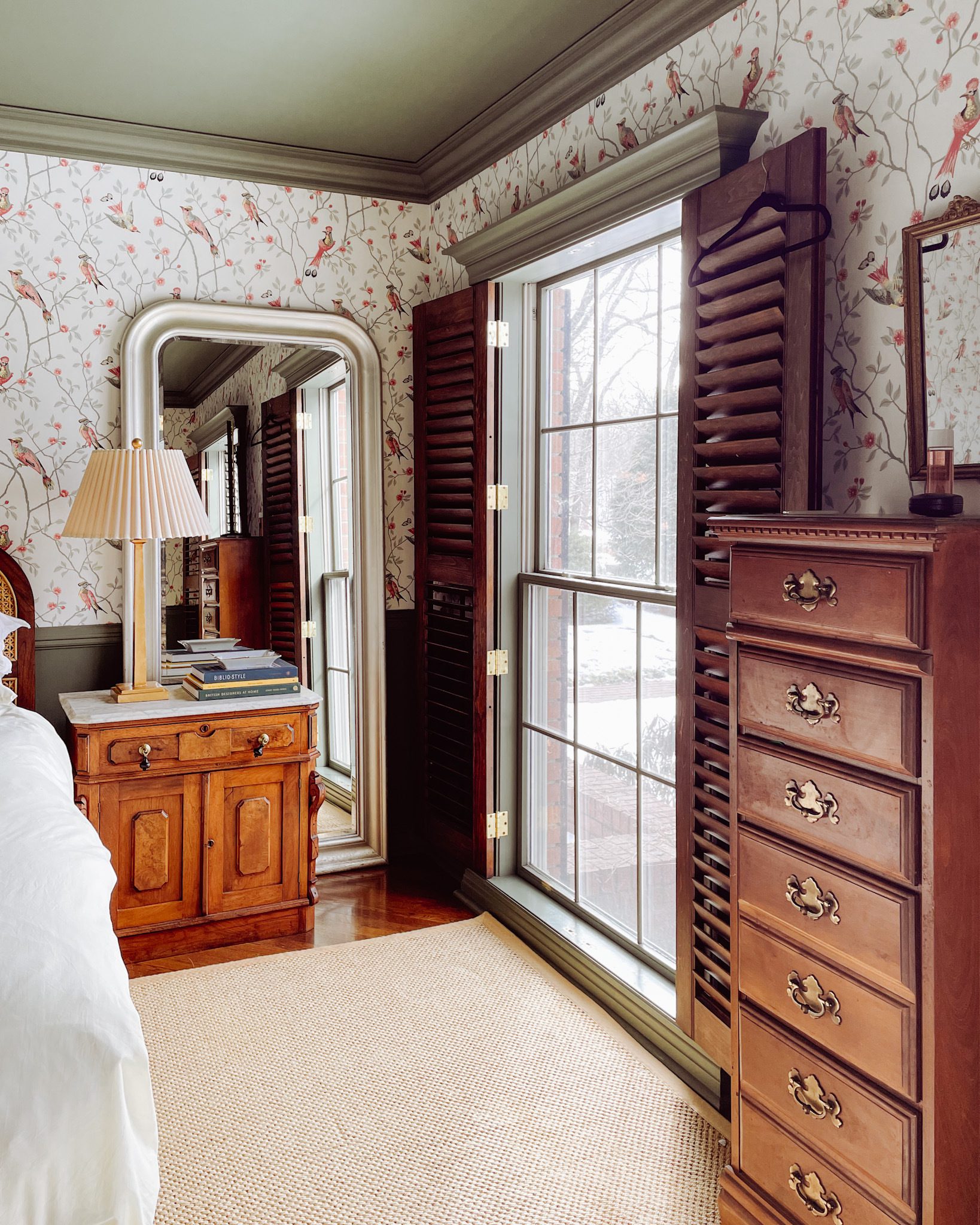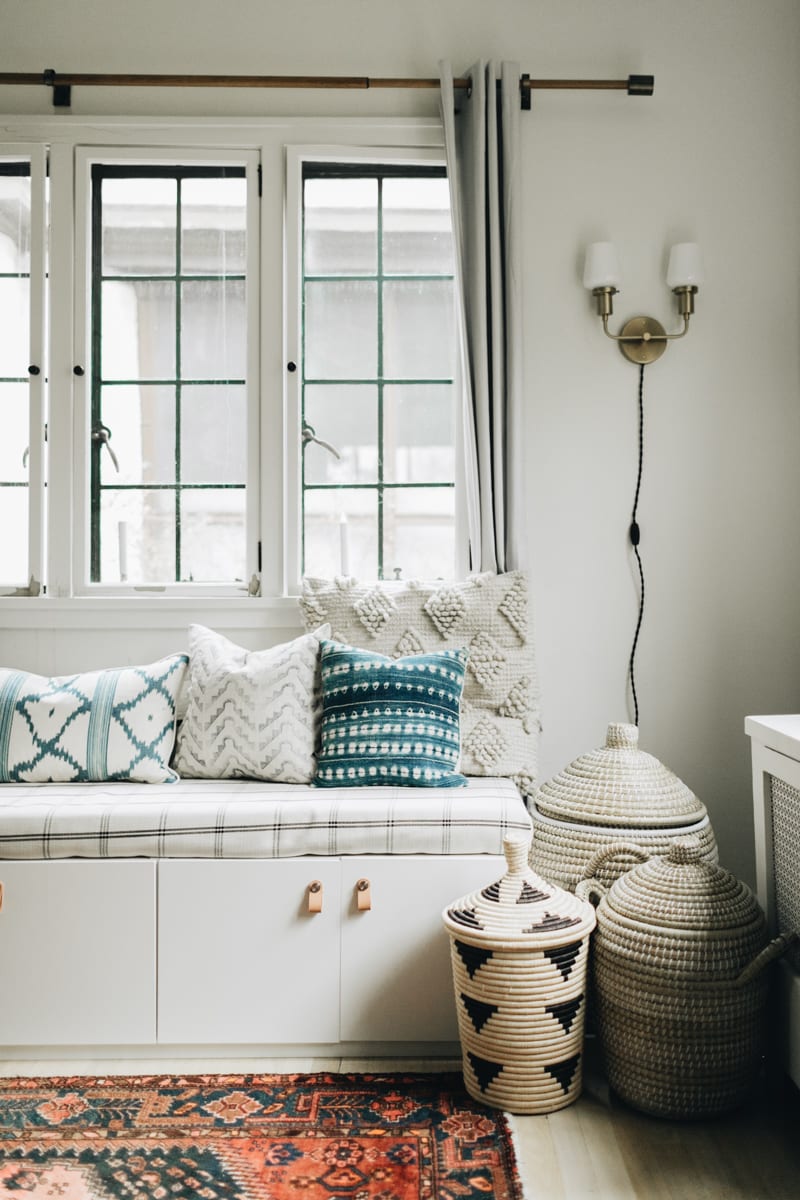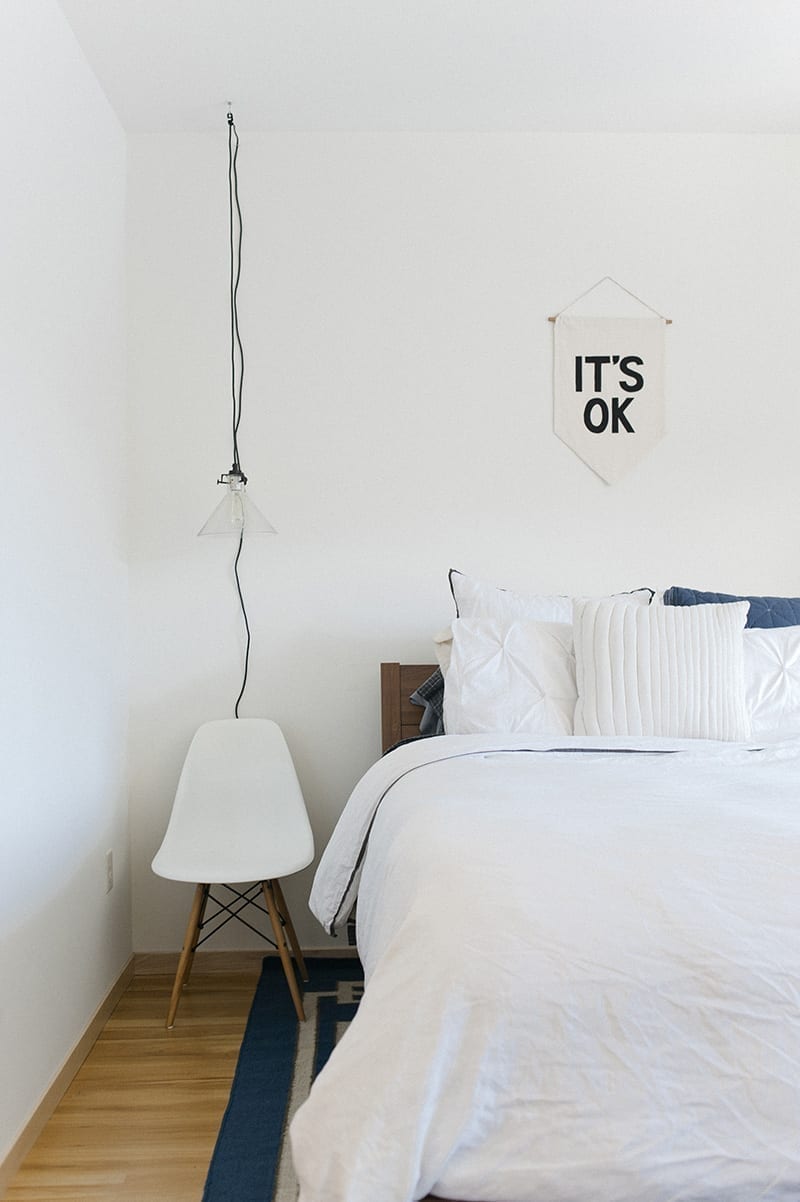
Editor’s Note: This article, originally published in August of 2020, is chock-full of tips for how to furnish your home on a budget. It’s something any designer, budding or seasoned, wants to keep in mind. We hope you find the insights below helpful.
Whether you recently moved into a new house or are making a few updates to your existing space, it’s no secret that furnishing a home can be expensive. From buying dining furniture to lounge furniture to bedroom furniture, it’s not exactly a surprise that the costs can add up quickly—and that’s not to mention the cost of all the decor pieces that will fill the nooks and crannies. Yeah… it’s a lot.
But furnishing your space doesn’t have to be something that gives you a migraine or keeps you up at night with worry. It can be a somewhat seamless, generally painless, even sometimes enjoyable process. I swear.
Today I’m sharing my primary advice for how to furnish your home on a budget (no migraines required).
If you have any advice of your own, please feel free to shout it out in the comments!
Make a List
This may seem like a simple notion (and sure, it is) but it’s also one of the most crucial steps of the entire process. Make a list of what you’re looking for, organize it by purchasing priority, and estimate how much each piece will cost or decide how much you’re willing to set aside for it.
Having this resource on hand will help you break up your purchasing into phases. And while there will always be a little room for improvisation or for changing your mind when inspiration strikes, having this baseline list to use as a guide will both help you stay on track with your budget and not get sidetracked by every piece of decor that may seem appealing while you’re shopping.
Plan Ahead
One reason why many people go over budget in their decorating is because of a last-minute approach to purchasing items. If you decide you want to buy a new sofa by the end of the week, for example, chances are you’re not going to buy the piece at the most opportune time, and you may not get the most bang for your buck.
Have your list on hand and keep an eye out for each piece in your everyday browsing (even if it’s an item you won’t be in the market to buy for months). When you see something you like, jot it down and keep it in your back pocket until the time is right for you. The right time may be when that item goes on sale, which leads me to my next point.
Use Annual Sales to Your Advantage
While the consumerist nature (and the many, many sales that come along with it) of our world can be frustrating at times, approaching annual sales as an opportune time to buy the things that are already on our lists is a more intentional way to go about the process. And the ideal time of year to shop for specific pieces is actually more of a science than it may seem.
This article from NerdWallet includes a helpful breakdown of what pieces to buy when. Need a new mattress? Your best bet is in September (especially over Labor Day weekend… and the same goes for appliances). Need new furniture? Black Friday, Labor Day, and Memorial Day are especially opportune times to buy. Looking for outdoor furniture? It’s recommended to snag that in October when the weather begins to turn. Patience is a virtue, and it can often lead you to you a really (really) good deal in the long run.
Go Slowly
Bringing a space to life is a marathon, not a sprint. Go slowly. When you’re in the mood to buy new furniture, sometimes the excitement of the process and the goal to fill a space with all the pieces you want can cause you to rush through it, quickly racking up purchases that take you way past your budget.
Try to remember that there is no rush to finish your space. You can live (and yes, even entertain) in a space that isn’t fully complete. In the long run, a room that’s slowly and thoughtfully decorated is going to feel much more like a reflection of you than one that was pulled together in a few weeks. As with most things in life, the wait will be worth it.
In the long run, a room that’s slowly and thoughtfully decorated is going to feel much more like a reflection of you than one that was pulled together in a few weeks. As with most things in life, the wait will be worth it.

Don’t Count Out DIY
It’s my firm belief that we all have more DIY skills in us than we may give ourselves credit for at first. If there’s a piece of furniture you want and you aren’t seeing it in your price range while shopping, consider bringing it to life on your own. Whether you build it from scratch completely, alter a budget-friendly piece (from IKEA or the like), or refresh furniture that you buy secondhand, options abound for how to bring individualized pieces to life. This DIY bench (pictured above) is one of my favorite projects I’ve done.
Train Your Eye
Part of the trick to learning how to decorate is figuring out how to train your eye. While you might not know how to pull the decor of an entire room together on the first try, you can figure it out with practice.
When you’re looking for furniture pieces, let everything—and I mean everything—serve as a source of inspiration. Go to a local antique store or browse online retailers—even those that may be priced a little higher than you’d prefer—and take note of what stands out to you. Expose yourself to interesting pieces or unique works of art. As you do, start to narrow down what it is about each piece that you like, until you’re better able to hone in on your personal style.
When you’re looking for furniture pieces, let everything—and I mean everything—serve as a source of inspiration. . . . If you expose yourself to unique and interesting pieces, even if they are out of your price range, you’ll learn to easily pick out the great pieces at less expensive stores.
If you expose yourself to unique and interesting pieces, even if they are out of your price range, you’ll learn to easily pick out the great pieces at less expensive stores. It takes practice to develop this skill but, eventually, it will help inform you about what pieces you want to bring into your home.
Shop Secondhand
It’s no secret that I have a love for shopping secondhand. I could spend hours browsing thrift or antique stores. I find the entire process so fulfilling and stimulating for my creative brain. And there’s another benefit to this little hobby of mine. Buying secondhand is (often) an opportunity to snag some major deals.
Shopping secondhand also allows you to find unique pieces that could assist in giving your space a distinct, charming look. As an example, I love buying high-quality frames at Goodwill (regardless of what’s inside). I fill them with digital reproductions of prints I purchase on Etsy, sized to fit the individual frame. It’s a really simple process, and visually effective to boot.
For more tips on shopping secondhand, have a look at this post on how to thrift like an expert and this article on how to thrift home decor.
Get Creative
When you’re furnishing your home, remember this: There are no rules in home design. Designing a space is a much more subjective process than folks often give it credit for, and it should be. The design of your home is meant to be a reflection of you—your ideas and your likes and the things that inspire you.
Use two side tables as a coffee table. Use two stools as nightstands. Grab a long piece of wood, prop it atop concrete blocks, and call it a bench. As you decide on furniture items, remember that it’s more than okay (and recommended, in fact) to think outside of the box.
The next time you’re stuck on where to find a particular piece of furniture, get creative. Use two side tables as a coffee table. Use two stools or chairs as nightstands. Grab a long piece of wood, prop it atop concrete blocks, and call it a bench. As you decide on furniture items, remember that it’s more than okay (and recommended, in fact) to think outside of the box.

Shift Your Mindset
This last one may be the most important of them all. Try not to have expectations about what the outcome needs to look like, and please try not to compare your space to others. Embrace the pieces you like as you go. Buying things that are expressions of you and your individual taste will do volumes for the room in the long run.
When you’re less constrained by the “rules” you think you need to follow, you can go with your gut about what organically looks good together and happy accidents can occur. When you’re less focused on measuring up to the homes of others, you can create a space that’s a reflection of you and stay on budget while doing so.
Make a plan, go with your gut, and get creative. Trust that your space will come together over time, and try to have fun in the process. And with that, I wish you well on all your home adventures to come. Happy decorating folks.

Kate is currently learning to play the Ukulele, much to the despair of her husband, kids, and dogs. Follow her on Instagram at @witanddelight_.